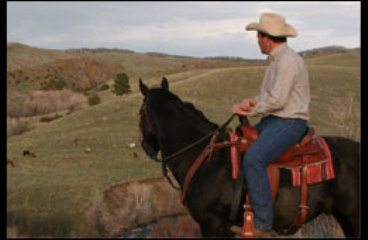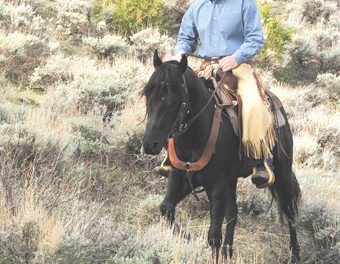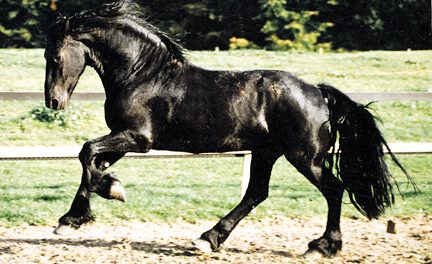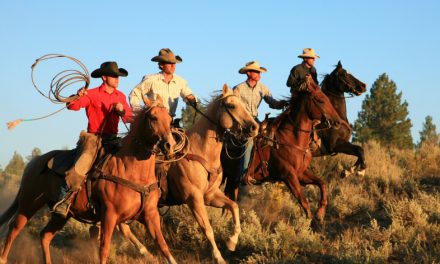 Your horse will be afraid of many things in his life, and that is natural. It’s how he survives in the wild. But, a horse that is out of control when he is afraid is dangerous to you and those around you, whether you are on the ground or under saddle. This month, we’ll discuss how you can help your horse overcome fear, using fear of clippers as an example.
Your horse will be afraid of many things in his life, and that is natural. It’s how he survives in the wild. But, a horse that is out of control when he is afraid is dangerous to you and those around you, whether you are on the ground or under saddle. This month, we’ll discuss how you can help your horse overcome fear, using fear of clippers as an example.
When your horse is afraid of the clippers, it becomes difficult or impossible to clip his bridle path, ears, muzzle, or anywhere else you might feel you wanted to clean up, like his fetlocks. One key thing here is you’re not going to tell your horse he can’t escape when he’s afraid, you are going to show him where he can escape to.
For this exercise you will be working from the ground, and you will need a bridle with a full cheek snaffle bit, rope reins, and a dressage whip to cue your horse to move forward if necessary.
Usually, the most fearful horses are the most insecure and what they need and are searching for is clear leadership. It’s your job to provide that. At some point during these exercises your horse may decide to say “no” to your requests by nipping or kicking out at the dressage whip. If this happens, reprimand him quietly, but don’t make a big deal of it and turn it into a fight. Your focus needs to be on changing your horse’s mind, not getting in a fight.
Our exercise for overcoming fear is based around getting the horse to lower his head. In the natural world, there are three reasons a horse will lower his head: to eat, to drink, and in preparation to lie down. What these three things have in common is that the horse needs to be relaxed in order to want to do any of them. So, to start our exercise, we are going to ask the horse to soften to the bit as we walk next to his shoulder. If your horse does not move forward, cue him by tapping him on the hip with the dressage whip. You are looking for the horse to bend his nose towards you while lowering his head in response to the rein pressure. Once you can get this consistently walking forward, start asking your horse to disengage his hindquarters (step his inside hind foot across in front of his outside hind foot) while staying soft with his nose. You can also ask him to step his shoulders over away from you while keeping his nose soft. What you are doing is creating a cue so when fear and distraction are added to the picture, you will have an exercise you both know that you can practice. It is your job to have a plan and something for him to do when he starts to lose control of his emotions. At this point in the exercise, remember you are just practicing putting this cue in place. You have not brought the scary object in to play yet. You need to be sure your horse will yield his body to you without anxiety before you introduce a scary object or sound into the situation.
As your horse progresses to softening to the bridle consistently on both sides, ask him to bring his nose lower and lower. Do this by lifting the bit towards the top corner of his mouth. Work until he will lower his nose all the way to the ground on cue. Make sure you repeat this exercise until it is solid on both sides. Then, work until you get his head all the way to the ground while his feet stay still. First, you are teaching your horse to let you control his feet. Then, you are teaching him to let you control his head elevation, which in turn lets you control his emotions.
Now, have someone bring in your clippers or whatever your scary object may be. Have your assistant stand in the pen a little ways away from you and turn the clippers on. Your horse will probably start to move around anxiously. Don’t make him stand still or make a big deal of anything, just start working on the softening exercise you practiced, asking him to lower his head each time he softens. When his feet stop and his head lowers, even for a second, have your assistant turn off the clippers and walk away. Through repetition, your horse will learn that he can make the scary thing go away if he just stands still and lowers his head. Repeat this until your horse is calm when someone else is standing near him with the clippers running, then practice with you holding the clippers, and finally move them closer and closer to him until he will let you touch him and run them over him.
Remember to stay calm through the entire progression and reward your horse by having the scary object leave or turn off when he stands still with his head down.
Enjoy teaching your horse and building his confidence in you. Until next time, may God bless the trails you ride.
For more information on Ken McNabb’s programs call us at 307-645-3149 or go to www.kenmcnabb.com




